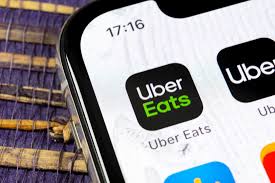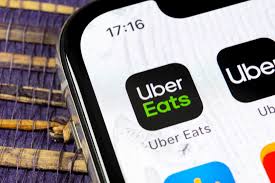
After capturing a significant market share of the ride hailing industry in South Africa, Uber is now attempting to make it big in the food delivery business there. The company plans to leverage its huge fleet of drivers operating in the most developed economy of Africa and identifying the most popular food choices and destinations of the customers in the market.
The incentive for Uber to focus on the industry is substantial. According to the data portal Statista, the total worth of the online food delivery industry of South Africa was 10.49 billion rand or $713 million in 2019. And it is predicted to reach 17.6 billion rand by 2023 with a growth rate of almost 14 per cent annually.
However the entry of the business was not smooth for Uber.
Since the economy of the country is almost always on the precipice of recession, the initial strategy of Uber to focus on high-end restaurants proved to be a faulty one. And as a consequence, the company is not targeting traditional, local fare.
The company launched its Uber Eats app in Soweto in May this year where it has partnered with around 20 entities and is in the process of including more local foods to its 480,000 menu items. Currently the service delivers dishes such as stewed tripe, caterpillars, cow heels and sheep's head to a customer base that is mostly middle-class who want food that tastes like home.
The results of this new strategy is delivering good outcome for Uber. While the company as a whole posted a loss of $1.16 billion for the third quarter, about 10 per cent of the quarterly revenue of $3.8 billion was accounted for by Uber Eats - the fastest-growing business segment of the company.
However there are other companies that are also hoping to tap into this lucrative business segment of South Africa.
One of the established players in this segment is South Africa's Mr D Food - part of Naspers-controlled e-commerce firm Take-a-Lot which was launched in the early 1990s as a call-and-deliver service. This app has been down loaded by about two million South Africans and it has about 700,000 active monthly users. 1.5 billion rand worth of food orders has been processed by the company over the past 12 months.
Since being launched in 2016, 2.1 million app downloads has been recorded by it, said Uber Eats. The company however did not provide any further details on the figures for food sales.
According to research firm Insight Surveys, around 80 per cent and 90 per cent of South Africa's food-hailing market is captured by the two companies.
Another rival is soon to enter the market. Uber's main competition in Africa - Bolt, the ride-hailing firm formerly known as Taxify, is slated to enter the market early next year.
"There is space for three, possibly four key market players, as the market is still in its infancy and will continue to show rapid growth in the future," said Yashvir Maharaj, research director at Insight Surveys.
Monitoring of popular food destinations is being done by Uber with the help of the data from its rides service. The company is also tracking popular food searches on the Uber Eats app in order to understand what people want.
"Now that we're in Soweto we want to take those experiences and expand them to other townships, and go even deeper into Soweto," Dave Kitley, Uber Eats' General Manager for South Africa, told Reuters. "We're thinking a lot about migration ... When they move, their taste buds move with them."
(Source:www.nasdaq.com)
The incentive for Uber to focus on the industry is substantial. According to the data portal Statista, the total worth of the online food delivery industry of South Africa was 10.49 billion rand or $713 million in 2019. And it is predicted to reach 17.6 billion rand by 2023 with a growth rate of almost 14 per cent annually.
However the entry of the business was not smooth for Uber.
Since the economy of the country is almost always on the precipice of recession, the initial strategy of Uber to focus on high-end restaurants proved to be a faulty one. And as a consequence, the company is not targeting traditional, local fare.
The company launched its Uber Eats app in Soweto in May this year where it has partnered with around 20 entities and is in the process of including more local foods to its 480,000 menu items. Currently the service delivers dishes such as stewed tripe, caterpillars, cow heels and sheep's head to a customer base that is mostly middle-class who want food that tastes like home.
The results of this new strategy is delivering good outcome for Uber. While the company as a whole posted a loss of $1.16 billion for the third quarter, about 10 per cent of the quarterly revenue of $3.8 billion was accounted for by Uber Eats - the fastest-growing business segment of the company.
However there are other companies that are also hoping to tap into this lucrative business segment of South Africa.
One of the established players in this segment is South Africa's Mr D Food - part of Naspers-controlled e-commerce firm Take-a-Lot which was launched in the early 1990s as a call-and-deliver service. This app has been down loaded by about two million South Africans and it has about 700,000 active monthly users. 1.5 billion rand worth of food orders has been processed by the company over the past 12 months.
Since being launched in 2016, 2.1 million app downloads has been recorded by it, said Uber Eats. The company however did not provide any further details on the figures for food sales.
According to research firm Insight Surveys, around 80 per cent and 90 per cent of South Africa's food-hailing market is captured by the two companies.
Another rival is soon to enter the market. Uber's main competition in Africa - Bolt, the ride-hailing firm formerly known as Taxify, is slated to enter the market early next year.
"There is space for three, possibly four key market players, as the market is still in its infancy and will continue to show rapid growth in the future," said Yashvir Maharaj, research director at Insight Surveys.
Monitoring of popular food destinations is being done by Uber with the help of the data from its rides service. The company is also tracking popular food searches on the Uber Eats app in order to understand what people want.
"Now that we're in Soweto we want to take those experiences and expand them to other townships, and go even deeper into Soweto," Dave Kitley, Uber Eats' General Manager for South Africa, told Reuters. "We're thinking a lot about migration ... When they move, their taste buds move with them."
(Source:www.nasdaq.com)














